Here’s something that every business can relate to: the people who show interest in their products or services seem to be more than those who eventually buy. These seeming window shoppers get your hopes up by lingering on your website, reading blog posts, and viewing product pages.
The clock keeps ticking while you wait for your new leads to finally make the purchase but it looks like that moment may never come. Don’t give up yet. There’s a good reason why this is happening and a way to increase the number of conversions.
According to Marketo, half of the leads in your sales funnel are not ready to make a purchase! You see, those leads who are yet to convert aren’t trying to raise and dash your hopes.
They are probably still considering their options or gathering information. So what do you do with these people who appear to be stalling?
You have two choices.
One is to let them be and hope they one day decide to buy from you. The second is to build a relationship with them and find a way to steer them towards making a buying decision.
It’s obvious that the latter is the better option, and a summary of what lead nurturing entails.
What is Lead Nurturing?
Lead nurturing is the process of answering your prospects’ questions that are related to your product or service at various stages of their buyer’s journey.
The point of lead nurturing is to create and develop relationships. There are a few reasons why leads might not be ready to make a purchase. Specific objections could exist in their minds, they could be uncertain whether you are the best option to solve their issues or at the initial part of the sales cycle, they could even be unaware that your products or services can solve their problems.
As a savvy business, you should aim to remove objections in your leads’ minds or showcase your product’s value to ensure that your prospects choose your business when they are set to make a purchase. To achieve either of these goals, you’ll need to be in regular contact with your prospects. There’s no better tool for staying in touch with your leads and meeting their needs than tailored content.
We’ll delve into the place of content in lead nurturing later in this article. But for now, let’s answer that nagging question that’s on your mind.
Why is Lead Nurturing Important?
Good question! We’ll let statistics do some of the talking.
- 96% of visitors to your website are not ready buyers (Marketo)
- About 80% of new leads never make a purchase (MarketingSherpa)
- Nurtured leads make 47% more purchases than non-nurtured leads (Invesp)
- Well nurtured leads produce a 20% increase in sales opportunities (DemandGen)
- Lead nurturing creates 50% more purchase-ready leads at a 33% lower cost (Forrester Research)
- 74% of businesses affirm that converting leads to buyers is their top priority (Hubspot)
- 53% of businesses claim that converting their leads is difficult. (Ascend2)
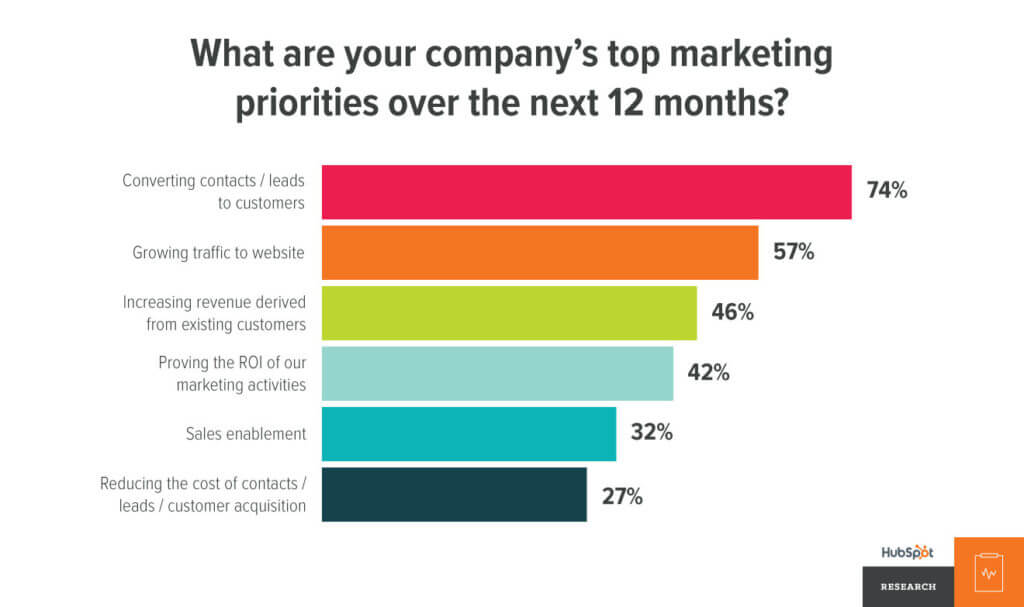
Numbers are cold, hard facts. But here are some additional points you can use to gain more support for lead nurturing:
It Helps You to Maintain Communication with Your Leads
It shouldn’t be surprising that people are more likely to opt for businesses that have embedded themselves in their lives. It’s just similar to how you are more likely to help a friend who has always stayed in touch than one who calls out of the blue asking for a favour. Effective lead nurturing makes your business that friend that stays in touch and therefore will be top of mind when your prospect is ready to make that purchase.
It Offers Useful Audience Insights
Lead nurturing fosters communication, and effective communication is a two-way thing. So as you reach out to leads with relevant content, ideally, they are to respond.
These responses will range from email replies to social media comments or likes. By engaging with your prospects, you build rapport with them. Additionally, these interactions can also reveal insights you can apply to convert more leads in the future.
For instance, from the data collected through various lead nurturing campaigns, you will discover how your prospects would like to engage with you. Also, running polls and surveys can give you an idea of what’s going in your leads’ minds and how to answer their most pressing questions.
It Establishes Your Business as an Authority in Your Industry
Your prospects want to be sure they will be getting good value for their money by choosing your solution ahead of your competitors’. Posing as an expert in your industry is one of the best ways of convincing them of your product’s superiority.
By using strategically crafted content that addresses specific pain points during the lead nurturing process, you will heighten your prospects’ confidence in your expertise. They will perceive you as one who is in touch with their needs, goals and fears. This will ultimately make them trust your product’s ability to meet their needs.
What is a Sales Funnel and a Buyers Journey?
You use lead nurturing to move prospects down your sales funnel and through their buyers’ journey. As such, your effective use of lead nurturing depends on your understanding of these two contexts in which it is applied. So what is a sales funnel and a buyer’s journey?
Sales Funnel
A sales funnel refers to the steps you take leads through right from when they contact your business till they become paying customers. It includes a set of marketing and sales actions you apply to get leads, convert them to and retain as customers.
Think of the sales funnel as an actual funnel. The top is wide and accommodates many leads. Then as you establish a relationship with them, the qualified leads trickle down the funnel till they come out of the other end as customers.
The sales funnel is divided into several stages, representing the actions you need to take to ensure that you move your leads closer to a purchase.
Stages of a Sales Funnel
There are five stages of a sales funnel, namely: attract, engage, capture, nurture, and convert.
Attract and engage – Top of the Funnel
Capture and Nurture – Middle of the Funnel
Convert – Bottom of the Funnel
Attract
Here is the point where you try to get your business in front of your audience. You want people to know you exist and that you offer something valuable. To drive the most attention and impact, you want to be loud, catchy and remarkable.
Your channels for attracting the right eyeballs include superb content marketing, search engine optimization, social media management and paid ads. In using these channels, focus on speaking directly to your audience in their language. Remember, the goal is to get them to look in your direction. Also, be value-driven. Your content needs to be relevant and helpful.
Engage
This stage requires you to kick your publicity efforts up a notch. You aren’t just targeting awareness alone; you also want to drive conversations and interactions with your audience. You’ll need to be consistent and focused on fostering two-way communication.
Capture
Now you’re moving your leads to the middle of your sales funnel. You need to be more strategic with your content in this phase because you want more than social media responses and return website visitors.
Your goal should be to get your leads’ contact details. To do that, you’ll have to offer them an irresistible incentive in exchange for this information. It’s generally called a lead magnet.
The details you’re looking to get will be information you can use in qualifying each lead with their email addresses. You can also segment these leads through different content types and channels with the use of various lead magnets.
You’re gunning for your prospects’ contact to create a more personal relationship with them and craft messages that are better tailored to their needs. They have also given you permission to contact them, which is a big step in the lead nurturing process.
Nurture
With relevant insights at your disposal, you move into nurturing your qualified leads. Now you know who your prospects are and what they want. The data they provided as you led them through the other stages can help you create personalized messages.
To develop personalized messages, you’ll need to segment your qualified leads based on their different traits. Once this is done, you can begin to send out targeted messages with a specific tone and voice to address specific issues that your target audience may have.
Your marketing messages can involve helpful content connected to your niche, answers to questions about your product and general content that demonstrates your solution’s value.
Convert
Leads at this stage are usually ready buyers. As such, your content should be very compelling.
Your goal should be to ensure your leads choose you above your competitors. Product samples, demos and free trials will come in handy.
You’re moving beyond mere words now to helping your prospects have a feel of what it’s like to be a consumer of your products and services. Other conversion-focused materials include customer testimonials and data-driven success stories would also help with this process.
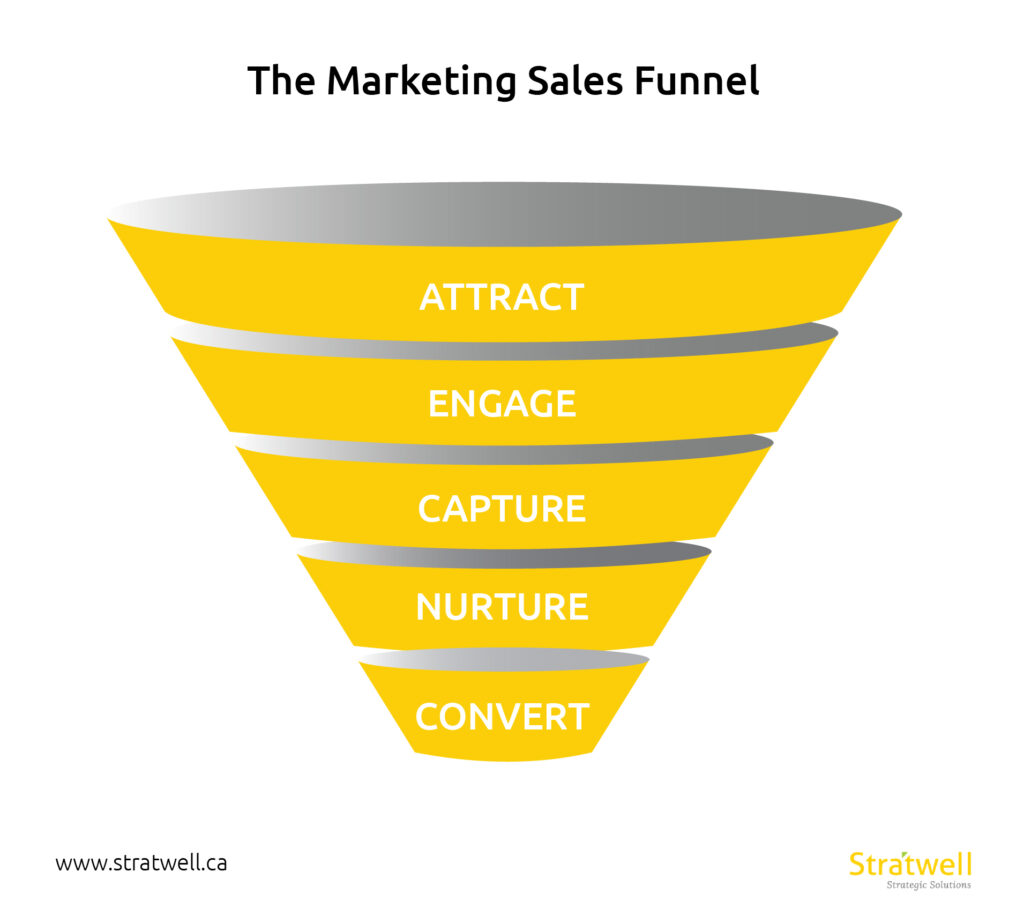
The Buyer’s Journey
The buyer’s journey is closely related to the sales funnel, only that it assesses the customers’ actions from their perspective. It’s the stages that prospects take themselves through right from when they discover a problem to when they choose a solution from a particular provider.
Some businesses may skip this process altogether. The truth is people don’t buy things without going through certain stages of research and consideration.
Every prospect experiences the buyer’s journey. What differs is the time that passes between each lead’s transition from one stage to the next.
So if every prospect exists in one stage of the buyer’s journey or the other, it’s beneficial for you to provide information each of your prospects requires to move to the next stage with your business in mind.
To provide effective information specific to each stage, it is important to understand the stages of the buyer’s journey.
Stages of the Buyer’s Journey
Awareness
You’ll find two sets of buyers at the awareness stage: those who know they have a problem but cannot name it and those who do not realize their needs yet. While both groups are in slightly different situations, going forward, their actions are usually similar. They will search for relevant information that explains their situation.
Those who already realize they have a problem will research their situation without additional prompts from any quarters. However, people who are still oblivious of their needs usually require gentle explanations to realize their needs.
Since buyers are still getting acquainted with the problem at this stage, they wouldn’t be ready to purchase a solution just yet. This understanding should influence how you plan to reach leads at the awareness stage.
Consideration
The consideration stage comes with even more research on the buyer’s end. However, research at this stage is various. Now buyers have identified their problem and have also decided that the issue requires attention. They then explore the possible methods of managing or changing their situation.
It’s important to understand that people in the consideration stage are still uninterested in a specific solution provider. They are simply looking for information on the generic ways of dealing with their problem.
Decision
At this stage, buyers have decided on a solution category. They believe they understand the type of product or service they need and compile a shortlist of such options.
They will do some more exploration, but this time they are concerned with the quality of the solutions they have identified. As such, they are tasked with choosing the most fitting option from their shortlist.
People’s activities at this stage usually end in a purchase. When all is said and done, the buyer invests in one solution and ignores others. If you want your business to be the one your leads choose, you should create a sound lead nurturing campaign.
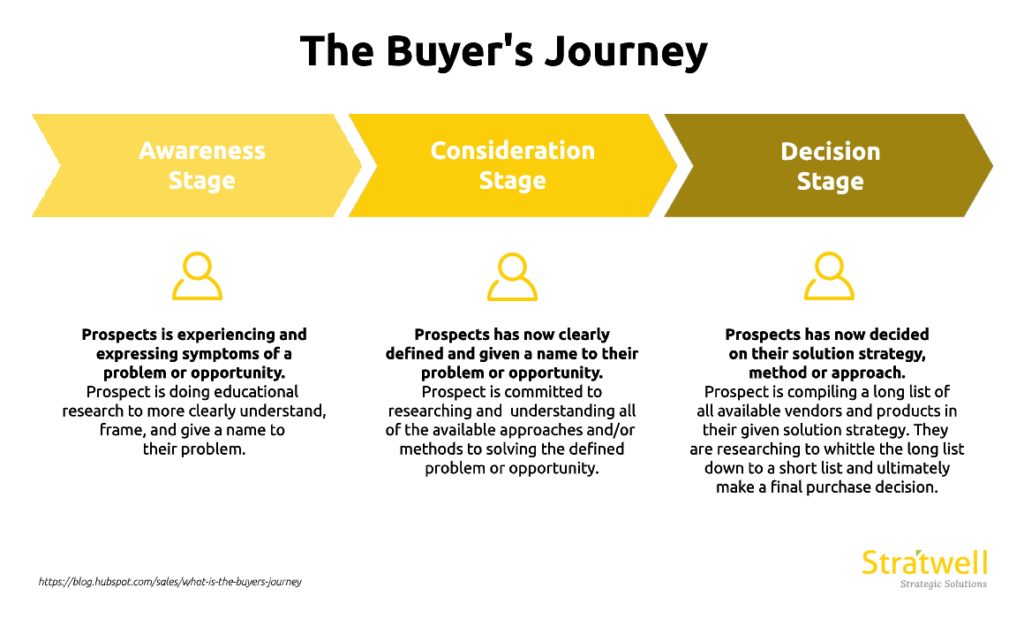
Planning, Executing and Optimizing Your Lead Nurturing Campaign
So far, we’ve looked at what lead nurturing is and why it matters. We’ve also delved into vital lead nurturing concepts like the sales funnel and the buyer’s journey. It’s time to piece all this knowledge together and see how you can effectively plan, launch and improve a lead nurturing campaign.
Understand Your Customer
The foundation of every sound marketing or sales strategy is a strong knowledge of the customer. Without it, you’d be building your plans on too many assumptions, and that hardly ever ends well! So, begin by mining data about your target audience when you are planning your lead nurturing campaign.
Your search for information on your audience will lead you to create a buyer persona. It’s a fictional representation of your ideal customers. It usually includes relevant details about them like their pain points, goals, objections and content preferences.
Once you’ve gathered ample useful information, segment your audience and know who you’re dealing with. Creating audience segments will ensure you craft personalized messages during the lead nurturing campaign. That way, you can speak to people directly and address their peculiar problems instead of creating generic marketing messages.
We have written a blog post on how to create a buyer persona in 4 simple steps, which you may access through here. To learn about the differences between targeted audience and buyer personas, check out our blog post here.
Map out Your Customer’s Journey
This is where your understanding of the buyer’s journey comes into play. The purpose of lead nurturing is to ensure you cater to buyers at various stages of their journey.
To do this, you would have to identify exactly how people do business with you. This is what a customer journey map is – a graphic representation of how people interact with your business.
To create your customer journey map, assess each stage of the buyer’s journey and define the actions that leads would typically take to engage with you.
For instance, people generally research symptoms of their problems during the awareness stage to understand their situation. How does your target audience look for ways to address the problems your product can solve? Do they search online or go to specific forums and websites? If they search for the information online, what keywords do they use in conducting their queries? If there is a website they visit to get information, is there a way to get your brand on that platform?
Answers to these questions will tell you what kind of lead nurturing content to create and where to place this content so your audience will find it.
Mapping out your customers’ journey also includes identifying all potential customer touchpoints and ensuring that they are well optimized to improve the customers’ experience and move them closer to a purchase. The idea is to be where your audience will be looking and ensure that they find what they are looking for there.
To read about how to create effective customer journey maps, check out our blog post here.
Create Content for Each Stage of the Customer’s Journey
Now you know who your customers are, what they want and how they interact with your business. It’s time to ensure that these people find answers to the questions they might have at each phase of their journey to becoming repeat buyers. These answers can be provided through tailored content.
Let’s take a look at the content types to focus on at each stage of the buyer’s journey. Note that some of these content formats can be used at different stages. You’ll only need to tailor their content towards the demands of each phase.
Awareness stage (Customers are trying to understand the problem)
Your goal: to help customers identify, understand and discover ways to solve their problem.
The most effective way to connect with your customers is to describe their pain points or goals in their words. Address issues like the scope of the problem, the consequences of leaving it unaddressed and the benefits of dealing with it. Try to be honest and helpful when describing your customers’ situation and clarify common misconceptions people might have about the issue.
Relevant content formats for the awareness stage include:
- Blog posts
- Social media posts
- Infographics
- Guides
- Ebooks
- Reports
- Statistics
- Tutorials and How-To Videos
- Whitepaper
Consideration Stage (Customers are researching possible solutions)
Your goal: to help customers understand the available solutions to their problems and see your product as a good fit for them.
Don’t be pushy or overly focused on the sale. Your leads are still gathering information and aren’t interested in your product specifically. So focus on creating educative content on how buyers can choose suitable solutions.
Again, appraise each solution category honestly. You want customers to view you as having their interests at heart. Having done this, you can also highlight your product’s peculiar features that make it a good fit for a particular segment of your audience.
Relevant content format for the consideration stage include:
- FAQs
- Webinars
- Product comparison guides
- Case studies
Decision Stage (Customers are ready to make a purchase and are considering a shortlist of solution providers)
Your goal: to help your target audience view your product as the best solution for them and choose it.
Here’s where you can pull out all the stops and bring your A-game to the pitching table. Leads at this point are obviously interested in your product, so they wouldn’t mind you coming at them with the hard sell.
Ensure you clarify and emphasize your product’s value. Also, dispel common reasons why leads are usually hesitant to buy your product.
Relevant content formats for the decision stage include:
- Testimonials
- Free trials
- Live demo
- Free consultation
- Coupons, discounts and promo codes
Point to Note: at this stage, you’ll likely be communicating with leads directly through emails. It’s important to schedule your promotional content, so you don’t overwhelm them with offers.
To learn how to get started on email marketing, check out our blog post here. To learn about its dos and don’ts, please click here.
Use Multichannel Lead Nurturing
Earlier, we talked about mapping out your customers’ touchpoints during their buyer’s journey. One reason why this is important is so you can take advantage of multi-channel lead nurturing.
It involves delivering targeted messages to leads through various channels. This allows you to cast a wider net to capture your audience on the platforms they use. Doing this will prevent you from losing touch with your leads at any point.
The goal of multi-channel lead nurturing isn’t to harass prospects with the same messages across diverse platforms. It’s to create a seamless experience that allows leads to get the information they need to move closer to making a purchase whenever they want.
To achieve this, you need an integrated system that will allow you to monitor your interactions with qualified leads and know which prospect has seen which message. You should also be able to track a lead’s progress through your sales funnel.
Channels for Lead Nurturing
Marketers do not consider these methods as having the same effectiveness levels when it comes to lead nurturing, 47% of marketers say email marketing is the most efficient lead nurturing channel, while 45% favour content marketing.
The other lead nurturing channels ranked in order of their popularity among marketers are social media marketing, web personalization, search engine optimization, demos or events, and paid search.
Review and Update
There is no such thing as a perfect system. This means in designing your lead nurturing system, there will always be room for improvement.
For instance, attempting to cater to new customer preferences with old methods can prove ineffective and cause some leads to slip through the cracks. But by constantly reviewing customer behaviour, your lead nurturing process and its results, you can reshape your methods to meet your prospects’ emerging needs.
Conclusion
Businesses that thrive go the extra mile. In this case, going the extra mile means deliberately using great content to nudge prospects towards making a purchase.
Doing this requires a deep understanding of your audience and the alignment of your marketing practices with their buyer’s journey. It also demands consistency and tact. However, the rewards are worth the effort.
For businesses that look to stay ahead, lead nurturing is a no-brainer. The question is: are you ready to put in the work to create an effective lead nurturing system?
Was this information useful? What is your take on lead nurturing? Share your thoughts with us in the comment section below.
Enjoy this article? Subscribe to get similar articles delivered to your inbox and don’t forget to share it with your friends.
Other Related Blog Posts:
Alan Lo, Managing Partner of Stratwell Strategic Solutions, brings a decade of entrepreneurial and business development experience. Early in his career he was instrumental in building out the distribution channels of a real estate investment firm with over $2 billion in AUM. He has then founded an investment company in 2014 which he successfully exited in 2019.

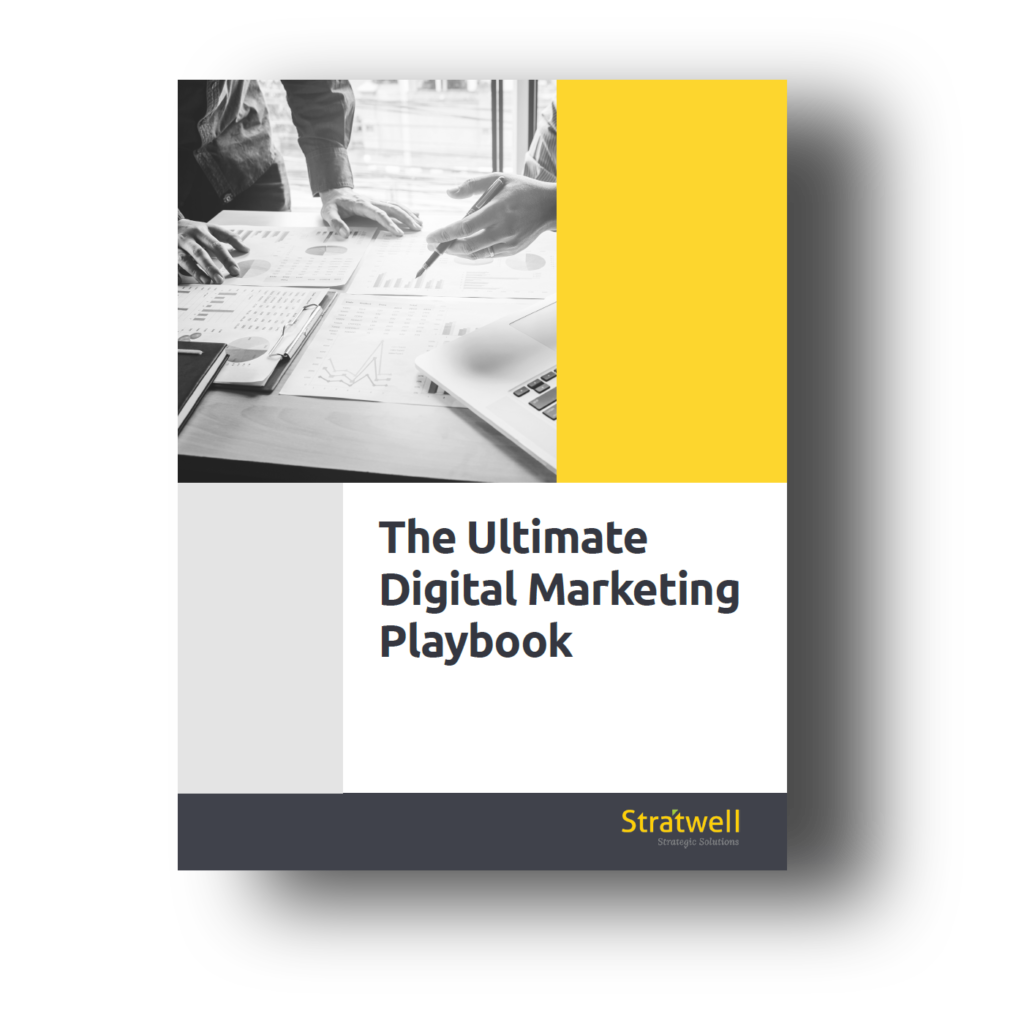










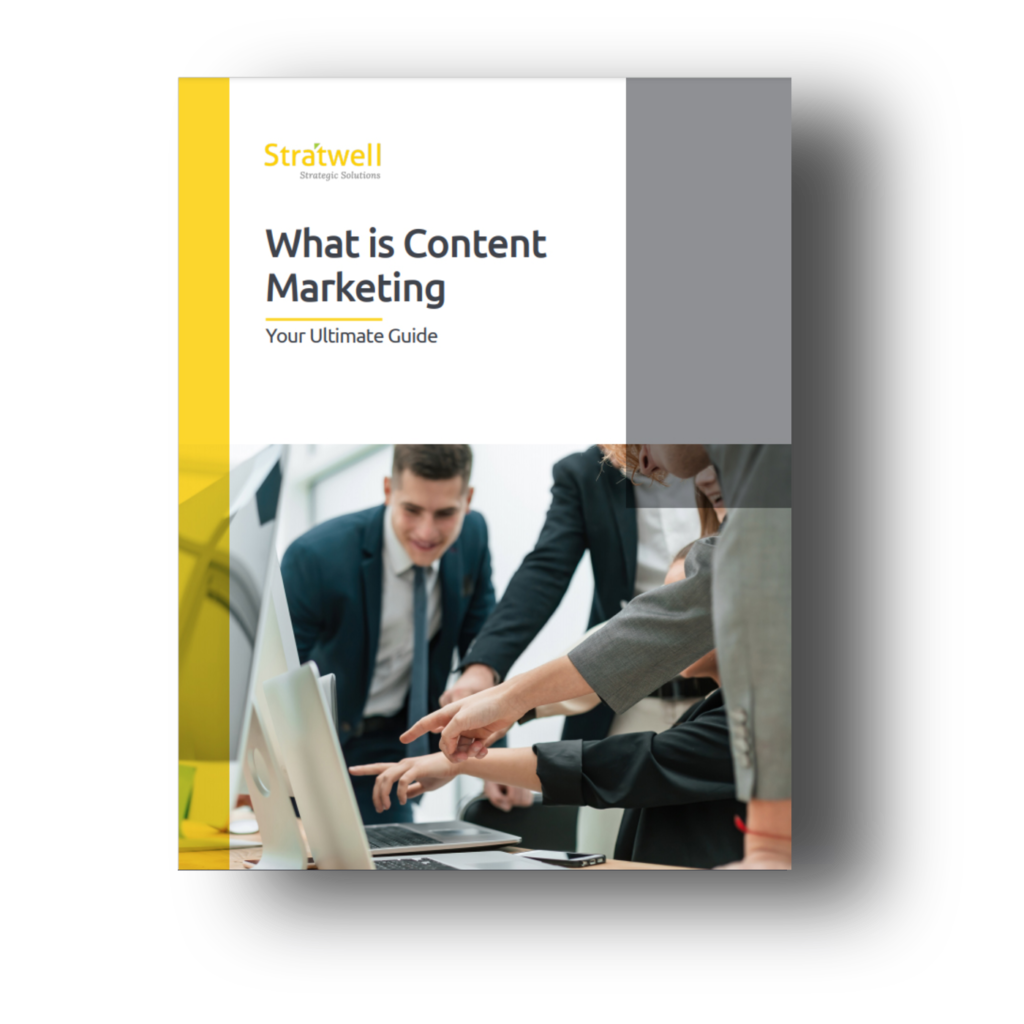
2 Comments
Hey there would you mind stating which blog platform you’re working with? I’m planning to start my own blog soon but I’m having a tough time making a decision.
The reason I ask is because your layout seems different then most blogs and I’m looking for something completely unique.
Hi Sibyl, we use WordPress. Please feel free to email me if you would like to discuss further.